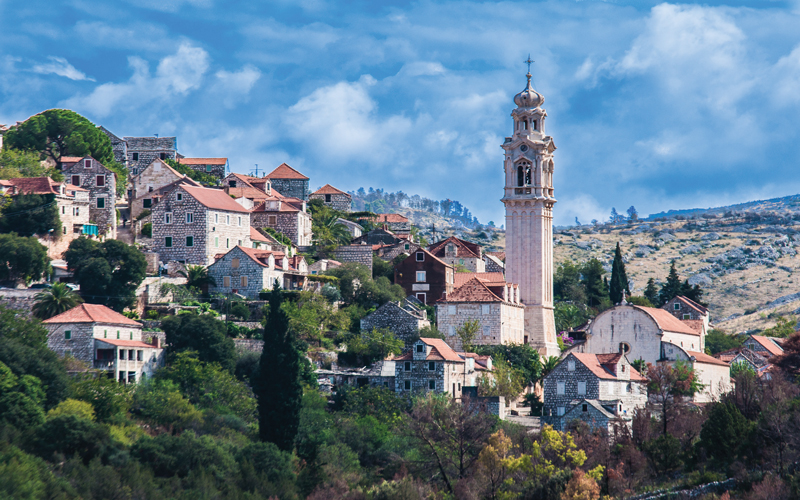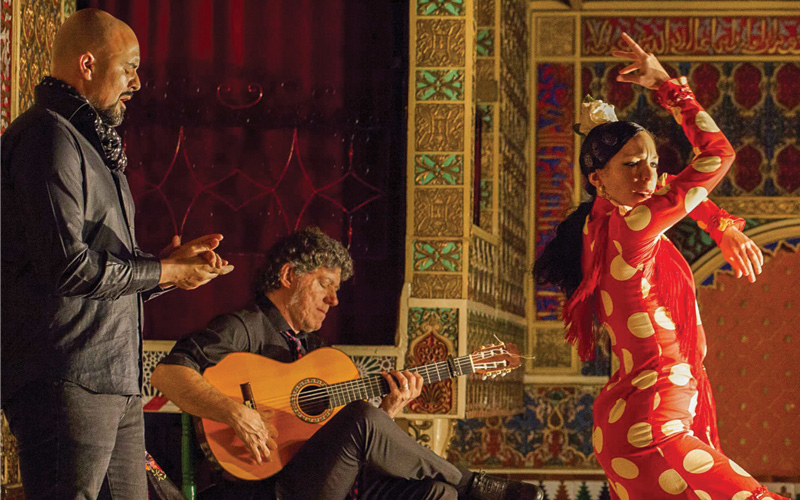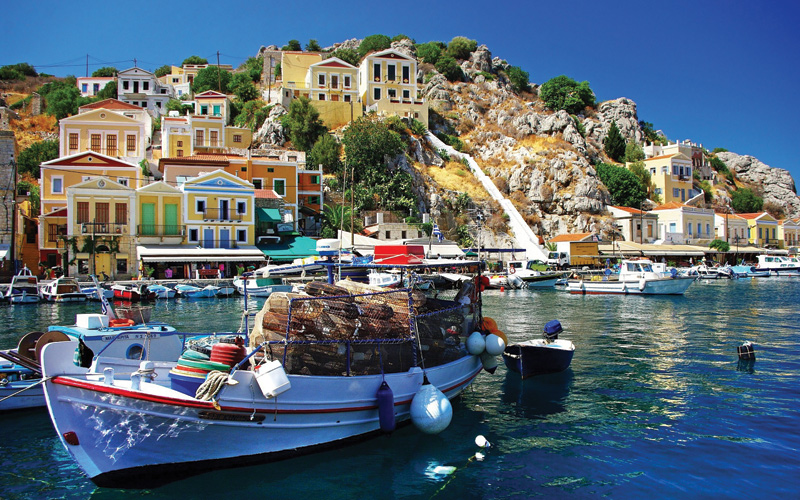Croatia: A Country for Every Season
Croatia has become one of the rising destinations for American travelers.

The country offers authentic experiences with vibrant local culture, historic cities, and beautiful landscapes. There are many national parks and parks of nature, sprawling vineyards and olive groves. The crystal-clear Adriatic sea, gorgeous beaches, and more than 1,000 islands make it a nautical paradise. It is a magical place on the Mediterranean, where even the shortest stroll becomes a journey down a staircase thousands of years old.
Croatia is also one of the ecologically best-preserved parts of Europe; there are 8 national parks and 11 parks of nature. The coast and its natural beauty is enhanced by architectural jewels such as you’ll find in Pula, Zadar, Sibenik, Trogir, Korcula, Split and the pearl of the Adriatic, Dubrovnik. Many smaller towns are equally impressive.
The Mediterranean climate on the coast is balmy enough for olives, figs, vines, oranges and lemons to grow. The beaches, crystal clear, turquoise blue waters of the Adriatic Sea are still among the main attractions. There are more than 1,000 islands to explore with many small bays and marinas, a heaven for sailing enthusiasts.
When to Go
The peak tourism season in Croatia is summer, especially July and August, due to the high number of sun and sea travelers. Travel during this time of year also offers guests the opportunity to visit the traditional annual summer festivals all along the coastline, with Split Summer Festival and Dubrovnik Summer Festival being the largest, starting in June with events going through the entire summer.
Recently, the tourism demand has been shifting towards late spring and early fall as travelers search for new and authentic experiences, lifeventures, touring and soft adventures (cycling, sailing, diving, windsurfing, snorkeling, kayaking, hiking, etc.)
Spring and fall are ideal months for adventure enthusiasts looking to explore the bountiful nature parks and UNESCO protected heritage sites. There are great value wellness and spa deals available in the spring and fall as well. The diverse offer ranges from indulging spa treatments in luxury hotels to wellness programs based on organic cosmetics.
There is no better way to explore Croatian cultural heritage than visiting some of the regional cultural events such as the International Lace festival in Lepoglava, SpancirFest in Varazdin or the Vinkovci Autumns in Vinkovci.
Foodies and wine enthusiasts cannot wait until fall when the wine and food festivals start in September. There are many gastronomy festivals and events in spring and fall such as the asparagus festivals in the spring, truffle and wine festivals in the fall.
Gastronomy travel is one segment of Croatian tourism that has proven to be very interesting to Americans. The Croatian gastronomy is specific for every region, reflecting the country’s geography, history, and culture. Each Croatian region has its own, unique cuisine. The northern and southern areas of the Adriatic are characterized by differences in taste and preparation of more Mediterranean foods. In the north of Croatia however, Austro-Hungarian culinary influences are more evident.
Cruise
Sun, sea and beach have been traditionally the major driver for tourists to visit Croatia due to its amazing location along the beautiful Adriatic Sea, indented coastline with 1,244 islands, islets and reefs, beautiful beaches and the calm Mediterranean climate.
Dubrovnik, Croatia’s main port of call, is known as the “Jewel of the Adriatic” for good reason. Its timeless beauty is encased in ancient fortress walls that surround Old Town Dubrovnik. Walking the narrow streets of the Old Town with a guide is a must. Guests should also visit Dubrovnik city walls and ride the cable car that takes you to the Srdj Mountain for amazing panoramic views of the city. One can take a boat tour of the neighboring Elaphiti Islands, Korcula or Peljesac peninsula, well known for wine in Croatia.
Split is Croatia’s second port of call, and also the largest city on the Middle and south Dalmatian coast. Diocletian’s Palace is living ancient history and has the status of a UNESCO protected site, standing as a monument to the power of the Roman Empire. Medieval buildings have been converted to modern shops, cafes and hotels. One can stroll the streets and back alleys of Split as well as the catacombs of Diocletian’s Palace. Split is close to islands Brac and Hvar so trips to those islands can make a nice itinerary.
Croatians offer their guests the very best, and you will feel a true hospitality everywhere you go. Croatia has a little bit of everything, the beauty, the heritage, the hospitality and the spirit on a rather small geographical area, making it a very attractive holiday destination.
www.croatia.hr





